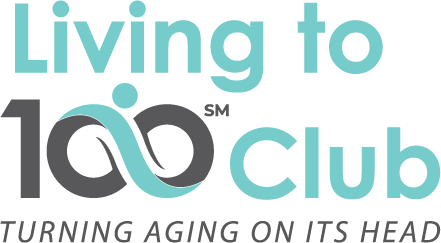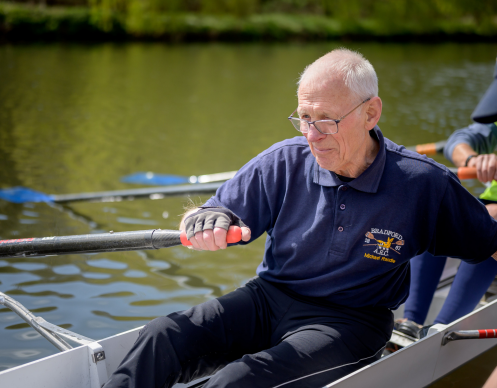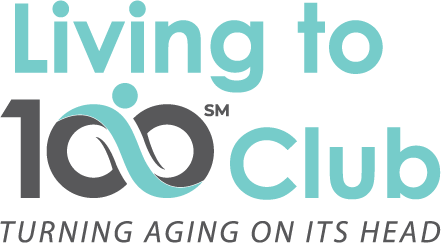BLH-INTRO-new
BETTER, LONGER
& HAPPIER
A guide to aging with purpose and positivity


The BETTER, LONGER & HAPPIER GUIDE is comprised of 12 card decks or Modules. They have been developed for Program Directors whose goal is to engage senior residents in activities, programs, and discussions that are exciting, cognitively challenging, and conducive to fostering a positive mindset about aging and managing setbacks.
ABSTRACT
The materials in this BETTER, LONGER & HAPPIER GUIDE reinforce the upsides of aging by:
- Demonstrating the capacity for growth and change while offering strategies to prevent disengagement, disinterest, and discouragement.
- Supporting those living in senior residential settings so they feel a greater connection to their community and successfully adapt to age-related changes.
- Providing cost-effective, ready-made lessons for Program Directors.
- Building new strength-focused habits that add vitality to the lives of older adult participants
- Utilizing the latest in neuroplasticity findings, shown to foster more cognitive growth than previously thought possible.
This BETTER, LONGER & HAPPIER GUIDE implements the experiences and insights of a geropsychologist with a 4- decade mental health history with older adults. This is particularly evident in these Modules regarding the importance of helping older adults celebrate and embrace aging in whatever shape and form it takes. This GUIDE, in essence, provides the keys to psychologically healthy aging.
INTRODUCTION
The BETTER, LONGER & HAPPIER GUIDE is a training manual, in the form of a series of 12 card decks that incorporate strategies to help older adults maintain a positive outlook while aging. It is for professionals who work with individuals in residential communities. These professionals strive to help residents stay cognitively challenged, engaged in their community, and keep a positive attitude about their future.
I am text block. Click edit button to change this text. Lorem ipsum dolor sit amet, consectetur adipiscing elit. Ut elit tellus, luctus nec ullamcorper mattis, pulvinar dapibus leo.
USER AUDIENCE
This program is designed for staff who create, plan, and deliver wellness and lifestyle programs at Independent and Assisted Living Facilities, as well as corporate trainers, and senior community organizations. These Directors are responsible for life enhancement, resident services, activities, or life enrichment programs. Collectively, the target audience is referred to as “Program Directors.” With this series of Modules in hand, Directors are given new tools that will not only make their job easier but also help them do a better job by seeing the psychological, cognitive, and interpersonal growth of their residents.
The users of this GUIDE are open to new tools to help senior residents shift their thinking about possibilities and opportunities in their future. The tools help to shift resident attitudes about aging and to help residents learn new skills. Program Directors see themselves doing a better job and, importantly, expect better results when they deliver this content. In some instances, Program Directors may have experienced a measure of their own job burnout, and their efforts to inspire and support residents may be waning. Despite their commitment to this population, this GUIDE can restore optimism and hope when performing their roles. Further, Program Directors will find themselves encouraged to reexamine their own attitudes about aging and challenge their own misconceptions about the uplifted changes in outlook that are possible. This expected outcome is unique to the program.
AUTHOR’S BELIEF STATEMENT
Our author, Dr. Joe Casciani, believes adults in the 55+ age group have untapped ability to learn new coping skills. When given the right approaches, they can use resilience to overcome setbacks, and experience more growth, opportunities, and excitement that come in our senior years. Instead of feeling discouraged, disengaged, and disinterested, the author believes with the proper strategies and education, many individuals in this age group have the capacity to feel refreshed and excited about aging, take more control of their future, and shift their mindset to help them live longer and healthier.
PROBLEM STATEMENT
The normal, human aging process typically brings with it physical, personal, and psychological challenges. This stage of life:
- Is often coupled with a stereotyped, self-limiting attitude that old age inevitably brings with it decline, helplessness, and dependency.
- Is accompanied by an ageist attitude that maintains we should stop expecting things from older adults.
- Often causes older adults to feel discouraged, to doubt their ability to grow, and consequently see these challenges as limiting their future and remaining years.
- In view of the booming anti-aging industry and with a market of $60B in the US in 2021 at an annual 8% increase rate, the demand to meet the needs and desires of the older adult population is unmatched in the U.S.
The serious question: What if the problem is really about how we think about aging? This GUIDE reverses the ageist belief of decline, self-limiting attitudes, and the notion that change is too difficult for that subgroup of older adults who are not already on a healthy and wellness journey. This GUIDE teaches new ways to overcome negative attitudes, become more engaged in relationships, and promote activities that foster positive mindset and future outlook. These Modules help older adults look forward to getting older.
HOW THIS GUIDE FIXES THE PROBLEM
The solution to the problem relies on resources that provide strategies to residents and clients to stay engaged in their residential setting or community. It is designed to help seniors enhance their cognitive and social functioning as well as learn ways to adopt more inspiring and optimistic views about their future. The BETTER, LONGER & HAPPIER GUIDE directly benefits:
(a) Senior Residents by enhancing their own health, adaptability, and future outlook.
(b) Program Directors with a cost-effective program to keep residents mentally, socially, and physically engaged. With these tools that allow them to feel more empowered, Program Directors will re-think what is possible with their residents.
(c) The residential settings by extending the stay of the senior program participants and keeping them at optimum physical and mental functioning. These settings also benefit from incentivizing their professional staff to feel more engaged and effective in their work.
OBJECTIVES AND OPPORTUNITIES
- Senior residential communities already have existing wellness programs in place. Generally, wellness programs emphasize the ingredients to successful aging, such as diet, fitness, socialization, and other factors.
- These programs typically do not address or reach the population that is already discouraged and disengaged. Consequently, the healthy, motivated residents stay healthy and motivated, while others remain disinterested, pessimistic about change, and negative in their expectations. How many residents prefer to stay in their apartments and turn down activity and socialization? The choice to retreat and avoid interaction has been shown to unfavorably impact physical function, outlook, and self-care.
- This proposal is just another trend that will die out in a short time. The tools and activities built into this package rely on the most current views on neuroplasticity and evidence-based research showing the strong likelihood that those in their senior years can learn new things, and that brain cells can continue to grow and make new neural pathways. Further, positive psychology shows that, with guidance and support, a negative mindset can give way to positive views of oneself and change. Additionally, the negative perception of aging (i.e., ageism = dependency, frailty, helplessness) is finally giving way to more realistic views on the upside to getting older. It highlights the fact that the 50-year old may have lived only half of his life, and our senior years are more realistically defined by opportunity, wisdom, growth, and celebration than decline and dependency.
- The cost is too high. The cost-saving benefits fall into four categories:
- Value derived for the seniors participating in this program can be viewed in terms of health and longevity, reduced demands on caregivers, and extending their stay in the facility.
- A potential medical cost-offset inherent that can result in higher physical functioning caused by a shift in mental attitude about self-care and taking responsibility for one’s own health. This can come from an improved fitness and nutrition mindset and stress management skills. This can be expected to reduce medical expenses related to possible lower medication usage, reduced ER and hospital visits, and less physical decline.
- Reducing the cost of staff time devoted to a search for activities that may or may not be appropriate for the resident population, the cost incurred in off-site training, conferences, and webinars, and the possible costs of re-educating new hires after turnover in the Director position.
- Financial gain for the facility accrues from the expected reduced turnover in residents as they become more challenged and engaged. Less tangible though equally important, facilities also win when families, referral sources, community organizations, and others learn about this innovative, enriching program.
- There is too much work involved to implement it. Reducing staff burden is one of the main drivers of this program. The educational material, experiential programs, and the countless resources in the form of card decks are streamlined for usability. They do not require preparation, development, or training. Most important, this program allows the staff to spend more time with residents, with its ready-made, innovative solutions to help Residents live better, longer, and happier.
SUMMARY
This GUIDE addresses and fixes a persisting attitude that advancing age means limitation and decline. It restores a sense of positivity, and promotes psychological expansion, health, and growth.
The 12 Modules can be purchased as a full set or individually. Ongoing group consultation and clinical training are also available from Dr. Casciani. For prices, see the flyer, MODULE TOPICS AND PRICES.


